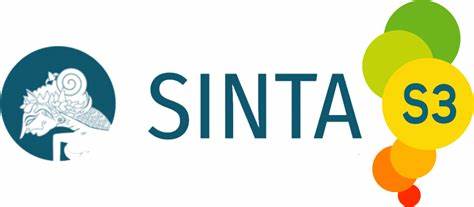CLOZE PASSAGE IN IMPROVING STUDENTS’ READING COMPREHENSION
DOI:
https://doi.org/10.22460/eltin.v4i2.p53-62Abstract
Using an effective practice of comprehending English text is another effort to improve
reading comprehension of EFL students, especially the Indonesian students. Thus, this
study aims to see whether there is a difference in performance when students practice
regularly with cloze passages and practice with passage in full but followed by
carefully written comprehension questions. Regarding the purpose of the research, an
experimental research is used where thirteen pairs of students from two groups are
observed. The data are collected from pre-test and post-test. Quantitative data
obtained is statistically analyzed and then compares by using t-test with paired sample
statistics. The result of the study reveals that Students treated by cloze passages
significantly better than students treated by full passages in terms of reading
comprehension ability. It is evidently clear that cloze is an essential teaching
technique that fosters reading comprehension. Therefore, it is recommended that
Keywords: Cloze Passage and Reading Comprehension
References
Ahluwalia, N. (1992). Major Issues in the Cloze Procedure. Indian Journal of Applied
Linguistics. (Volume No is not available):81-96.
Campbell, J. 1995. The Habit of Reading: Why Is It Important? How Can We Develop
it?. British Council Library and Information Service.
Daines, D. (1982). Reading in the Content Area: Strategies for Teachers. Glenview,
III: Scott, Foresman.
Dreyer, C. & Nel, C. (2003). Teaching Reading Strategies and Reading
Comprehension within a Technology-enhanced Learning Environment.
System. Vol.31. 3: 349-366.
Gunning, T. G. (1998). Assessing and Correcting: Reading and Writing Difficulties.
Needham Heights: Allyn & Bacon.
Hatch and Lazarton. (1991). The Research Manual: Design and Statistics for Applied
Linguistics. Los Angeles: University of California
Heaton, J. B. 1991. Writing English Language Tests. New York: Longman.
Li-Juan, Jiao. (2007). Problems in EFL Reading Teaching and Possibe Solutions.
Dallan, China: School of Foreign Language Dallan Polytechnic University
Oller, J.R.. (1986). Language Tests in School.London : Longman.Rye, J. (1982). The
Cloze Procedure and the Teaching of Reading. Oxford: Heinemann
Educational Books Ltd.
Scholars. (1987). Communication Skills: Success with Reading (Computer Software
Review). School Library Journal of Media Evaluation Centre Department of
Public Instruction, Raleigh, North Carolina. Vol.33.5: 42-45. [Electronic].
Available: EBSCOHost: Academic Search Premier. [Accessed on 2011,
January 28].
Steinman, L. (2002). A Touch of … Class!: Considering the Cloze. [Electronic]. The
Canadian Modern Language Review. Vol.59.2: 291-302. Available: EBSCO
Host: Academic Search Premier. [Accessed on 2011, January 28]. Wahyuni,
P. (2000). Teacher’s Style in Presenting Expository Texts: A Qualitative
Study on Teaching Learning Process in Reading at the First Grade Students
of High School at PP Darul Arqam Muhamadiyah Garut. Unpublished
Thesis. UPI
Wallace, C. (1992). Reading. Oxford: Oxford University Press.
Wallace, C. (2001). Critical Reading in Language Education. Macmillan: Palgrave
Macmillan.
Yamashita, J. (2003). Processes of Taking a Gap-filling Test: Comprehension of
Skilled and Less Skilled EFL Readers. Language Testing. Vol.20.3: 267-293.





